This one day Blue Mountains itinerary is designed for travelling to the mountains by train. It will allow you to see the key sites in this world heritage wilderness and sample a couple of short walks. I have been catching the train to visit the Blue Mountains several times a year for longer than I care to admit, so I have had plenty of time to get this itinerary polished 😉
This post contains affiliate links. Our full disclosure policy is here.
Tick off all the key sites on this Blue Mountains Day Trip
With beautiful lookouts, natural wonders, and charming village town centres, visiting the Blue Mountains is the perfect tonic when the big city gets too loud and busy.
It’s a beautiful spot for a day trip from Sydney and only two hours from Sydney Central Station, making it a great day out on public transport.
Dharug and Gundungurra are the Traditional Owners of the land we are visiting today.
If you have more time, we suggest an overnight stay – or a repeat visit – there is so much to see and do in the Blue Mountains you will want to return.
Tips for planning the perfect Blue Mountains day trip
- Visit on a weekday if you can – you will be rewarded with fewer people on the trails.
- Depart Sydney as early as you can – 6am is great, but even the 7am train is a good bet.
- If you are on a tight budget, then go on Friday, Saturday or Sunday when the ticket will cost you just $9.65 return!
- Try not to plan too much. Two villages and a couple of short walks are enough for a one day visit.
- Consider booking the Blue Mountains Explorer bus, it’s a hop on hop off service with 37 stops and helpful staff to answer all your questions.
Getting to the Blue Mountains by train
This is a day trip that is relatively easy to do by train. The journey only takes about 20 minutes longer than driving, and you get to relax all the way.
However, if you prefer to drive, go right ahead. Just expect heavy peak hour traffic if you don’t get away early.
How far is it from Sydney to Katoomba?
From Sydney to Katoomba is about 120km which takes about 90 minutes by car and two hours by train.
Our starting point for today is Central Station. The biggest train stations in the country train to the mountains can leave from either the suburban or country terminal, so check the signboard or ask a staff member if you have any trouble locating your train.
You can pay for your ticket using your debit or credit card or even pay wave. It will cost you $19.30 (daily travel cap) in peak hour. If you travel on Friday, Saturday or Sunday, tickets are capped at $9.56 return.
Stop 1 – Katoomba Town Centre
Katoomba was initially a mining town, and it was not until the coal seam was stripped bare in the late 1800s that it switched gears and became a popular tourist village. By the 1920s, Sydneysiders were visiting in large numbers. There are many buildings from this time, including the historic Carrington Hotel. If time allows, pop in for a cocktail or beer later in the day before you return to Sydney.

There are also plenty of shops, cafes, and restaurants here. You could easily walk around the whole centre within half an hour. That is, if you can resist having a fossick in the antique stores and browsing the outdoor and hiking shops at the far end of the street.
For now, take a wander along Katoomba Street, buy a coffee and some snacks for your morning tea and perhaps lunch if you would like to picnic.
Then check out the street art on Beverley Place. It runs parallel to Katoomba Street. Make a left when you get to Aldi, and it’s just a few steps past the corner.


There are more than a dozen murals by local and visiting artists. There are two of our favourites.
Also, just off Katoomba Street, about midway along, is the Blue Mountains Cultural Centre. Follow the sign to Coles Supermarket, and you will find it. If you are not planning on doing much hiking today, you probably have time to make a brief visit here. It is open from 10am every day except for public holidays and, along with a gallery space, has the best gift shop in the mountains.
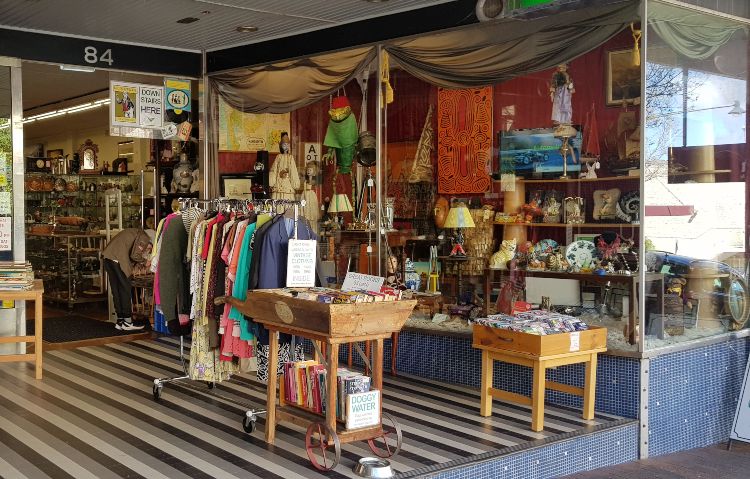
Katoomba’s name comes from the Aboriginal word kedumba, meaning shiny, falling waters or water tumbling over hill.
Once you have seen enough of Katoomba town centre, it’s time to head to our next stop. Make your way to the bus at the top of Lurline Street outside the Clarendon Guest House.
Take the bus to Katoomba Falls Reserve, where you can join a lovely short walk to Katoomba Falls. Once you have seen the falls, continue to Katoomba Cascades, which I think is much prettier.
Tip: If you want to save time, you could jump in a taxi for this short drive to our first stop today.

Stop 2 – Katoomba Falls and Katoomba Cascades
This popular walk is quite easy and will reward you with spectacular valley views as the path traces the cliff’s edge for most of its 2km length.
Start your walk at the kiosk in the Prince Henry Reserve opposite the Katoomba Caravan park. The first part of the walk takes you on a lookout over Katoomba Falls. This section is now actually lit at night if you are planning to stay in the mountains for a couple of days.
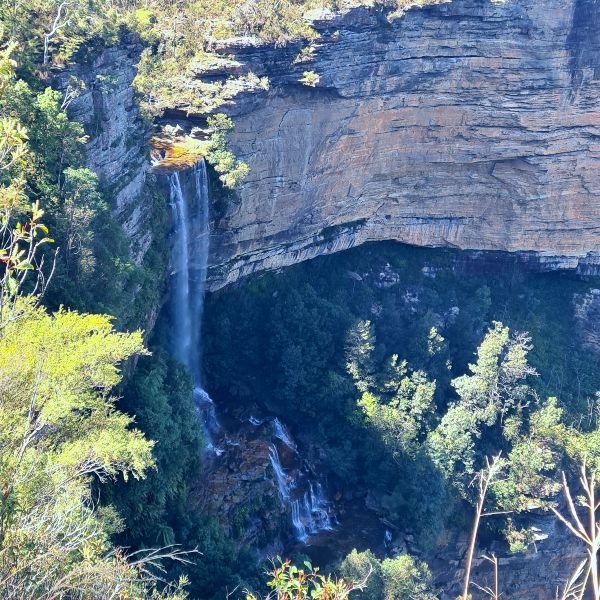

Continue and you will come to Katoomba Cascades. They do not mark these on Google maps but you can find the right on the track here (map link)
The route is part of the Prince Henry Cliff Walk, which continues to Leura, however today we will only complete the section to Echo Point.
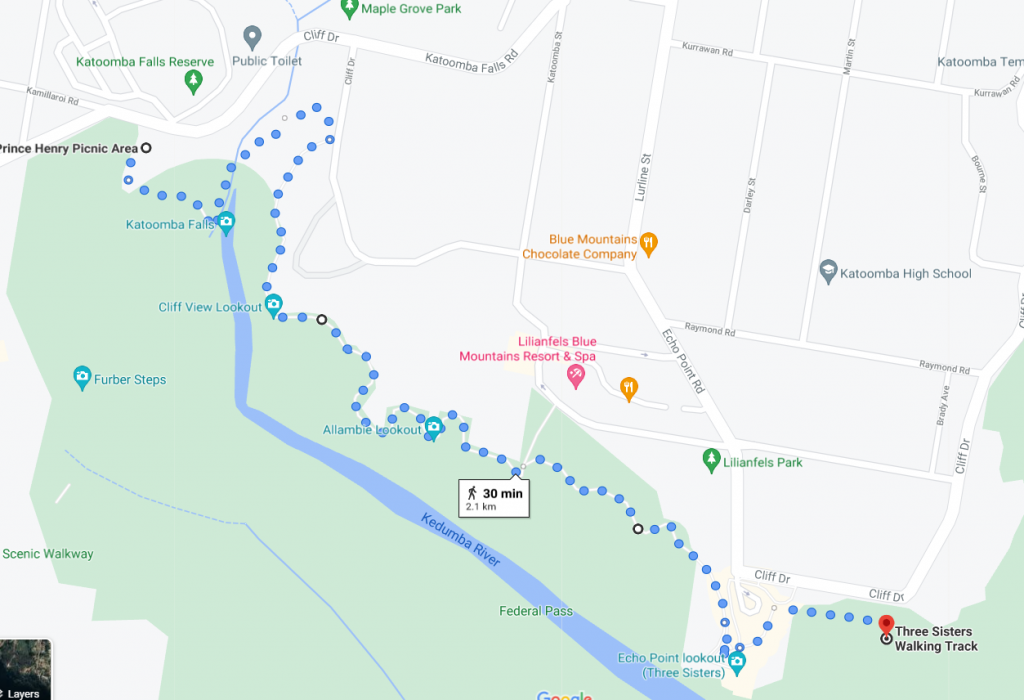
You will probably need about an hour to cover the walk if you include all the photo stops you make at the five lookouts along the way.


There are some stairs, but most people with average fitness will find it a breeze. However, if you are not up to it, you can make your way back to the street from the Cascades and take the 686 bus to Echo Point.
Stop 3 – Echo Point Lookout and the Three Sisters
The Three Sisters rock formation at Echo Point is the site all the tour buses come to see. It’s pretty special too. Along with the lookout are a shop and information centre and public toilets.
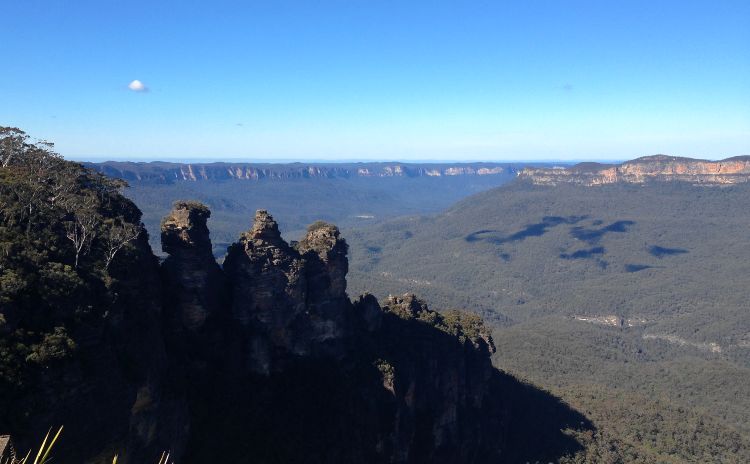
There are a couple of viewing platforms at Echo Point. The main one can get quite busy, so make your way to Spooners Lookout, just a few minutes down the path behind the Visitors Centre, and well worth the detour for a private view. The dramatic views over the valley to Mount Solitary are awe-inspiring.
Why are they called the Three Sisters?
One legend suggests the rocks where three beautiful women were turned to stone by their father, Tyawan, who was protecting them from danger. He changed himself into a lyrebird but lost his power before he could return to human form, so he remained a lyrebird and they remained rock.
You can read about this and an alternate version here.
Several hiking trails depart from behind the visitors’ centre. Even if you do not plan on hiking, take some time to walk down to Honeymoon Bridge and onto the first of the Three Sisters.
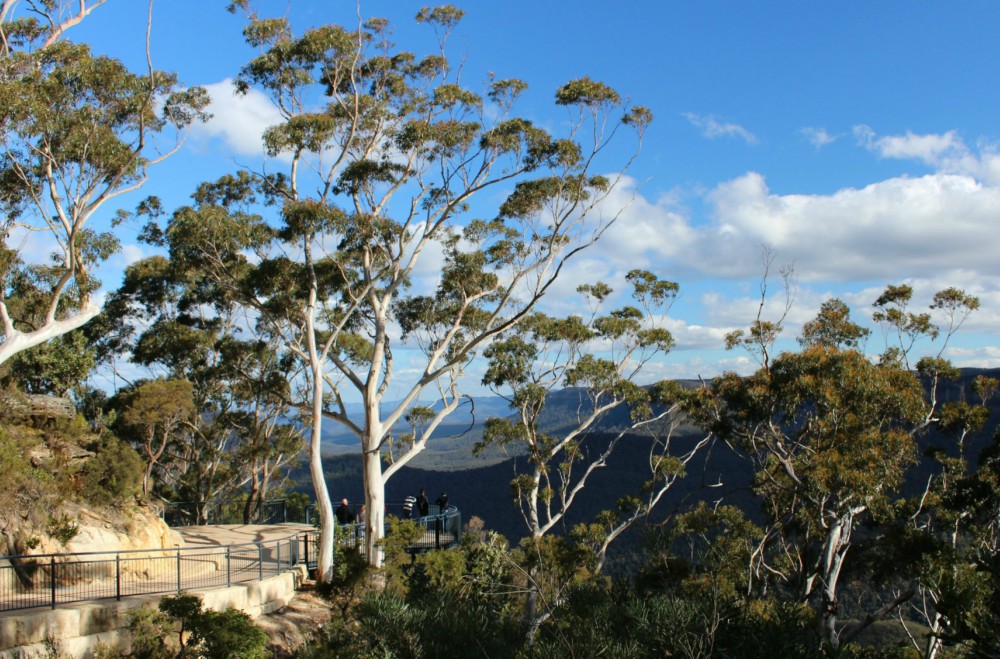
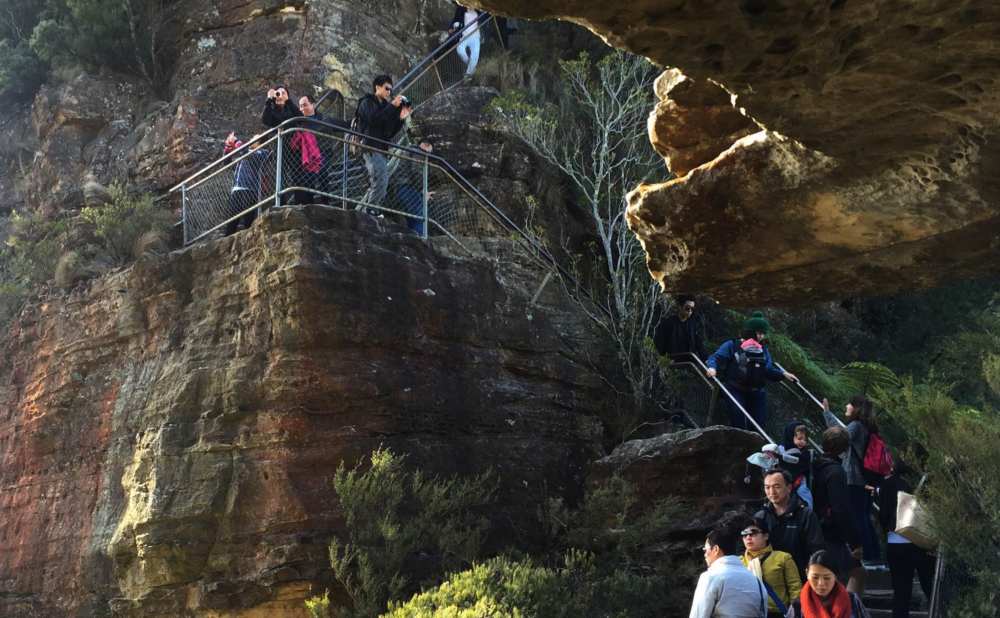

Making your way down the stairs and onto the bridge of the first of the Three Sisters Katoomba
Continue back to Echo Point Road, where you will find the 695 Bus stop that will take you to our next stop in Leura.
Detour: If you’re feeling energetic, you can also hike further down to the valley floor. You reach the valley at the bottom of the Three Sisters via the Giant Stairway. This involves walking through bushland and climbing down 998 steps carved into the rock face. You join the Federal Pass hiking trail from the base, which will take you to the Scenic railway, the steepest railway in the world, and back up to the top of the valley and the Scenic World attraction.
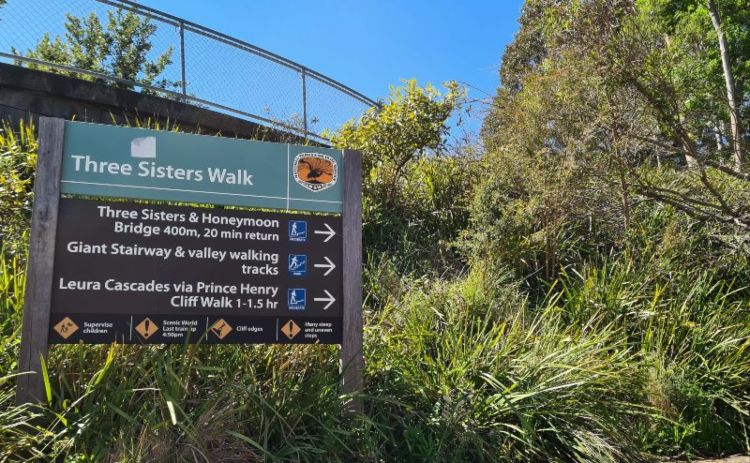
On this walk, you would retrace your steps from this morning’s Prince Henry Cliff Walk; however, you are at the bottom of the valley this time. It would be best if you allowed yourself plenty of time to complete this detour. It will probably mean you have less or no time to explore the village of Leura later today.
Stop 4 – Leuralla Gardens and Olympian Rock Lookout
Jump off the bus at Leuralla on Olympian Parade. For a change of pace, particularly if the weather is not being kind, I suggest you stay on the bus until you get to Bygone Beauties.
Leuralla is also a fine Art déco home and one of the finest properties open to the public in the Blue Mountains. The Heritage-listed home was inspired by the designs of Frank Lloyd Wright and is shown its original state.
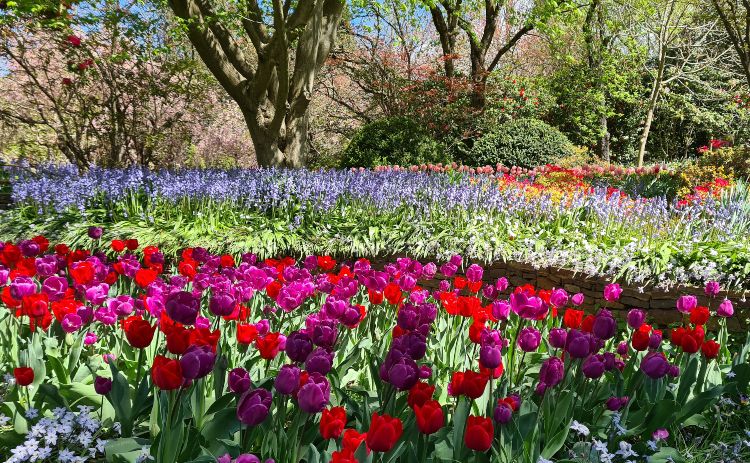
Surrounding the home are 12 hectares of garden, which offer something year-round but are stunning in spring.
If historic homes are not your cup of tea, head straight across the road and take in the views of the valley as you walk between Elysian Rock Lookout and Olympian Rock.
Lunch – move directly to Stop 6 if you fancy a sit-down lunch.
If you would like a nice cafe lunch and some browsing around the village shops, then head back to Leura Village. There are plenty of dining options to choose from, the Bunker is my favourite.
You can hop on the 696 bus towards Leura Mall or choose to walk, it’s a flat, simple walk to Leura village and will take you past some of the most lovely homes and gardens in the mountains.
Stop 5 – The Pool of Siloam and Lyrebird Dell
This is my favourite walk in Leura. The path is a bit overgrown in spots, and the walk is a little harder than this morning’s, but it has two rewards that make the effort worthwhile.

You make your way south along Olympian Parade to Gordon Falls Reserve. The track starts from the reserve. Follow the signs to the Pool of Siloam. It’s a very short 450m to reach this peaceful spot.

The Pool of Siloam in the Blue Mountains National Park is an oasis for wildlife lovers with many species to be spotted, including kookaburras, galahs, cockatoos, and occasionally echidnas.
It’s a further 500m to Lyrebird Dell. On the way to Lyrebird Dell you will pass a cave with some old picnic tables. The cave is a significant site for the traditional owners of this land.

The dell is a small clearing surrounded by dense rainforest that is supposedly home to lyrebirds. These birds were named after their call because they sound like musical instruments. They are timid, so don’t expect any close encounters unless you get lucky. We have yet to spot one here but are assured there is usually a good number.
From Lyrebird Dell back to Leura Station is a 1.7km walk or a 4-minute taxi ride if you are too tired to continue.
All up, the walk from Leuralla via these two stops and back to Leura Mall is 2.8km, and I estimate it will take you about 1hr and 20 minutes to complete, about 40 minutes walking time and the rest taking it all in!
Stop 6 – Leura Mall
Leura Mall is the main street in Leura and the location of Leura Train Station, making it a great place to finish up our day in the mountains.
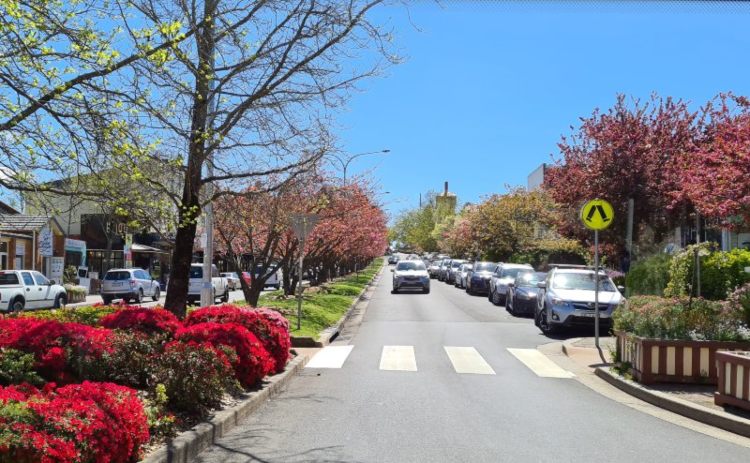
The street itself is gorgeous in spring when the middle strip is lined with trees in bloom. If you want to reward yourself with a drink and some delicious eats before the train ride home, stop at the Bunker, one of the most popular places to eat in Leura. Trains back to Sydney leave hourly at 19 minutes past the hour until at least 8.19 pm.

We have saved all these major sights on our Google maps so you can plan your day in the mountains.
We think a day in the Blue Mountains is the perfect city escape. If you don’t fancy doing it yourself, there are several Blue Mountains tours to choose from that depart both Sydney and Katoomba.
Other sites to consider when you explore the Blue Mountains
- Scenic World with the Scenic Skyway is a popular attraction that offers breathtaking views as it glides over the Jamison Valley.
- Wentworth Falls, which can be reached by bus or taxi from Wentworth Falls station, is also a brilliant choice if you fancy a full day of hiking.
- Blackheath and Govett Leap Lookout offer panoramic views over the Grose Valley. Take the train from Sydney to Blackheath. You can walk from here or jump on a local bus to the National Park Visitors’ Centre. The sandstone cliffs and views toward Pulpit Rock are incredible.
- Leura Cascades is a lovely picnic spot that has recently partially reopened after flood damage.
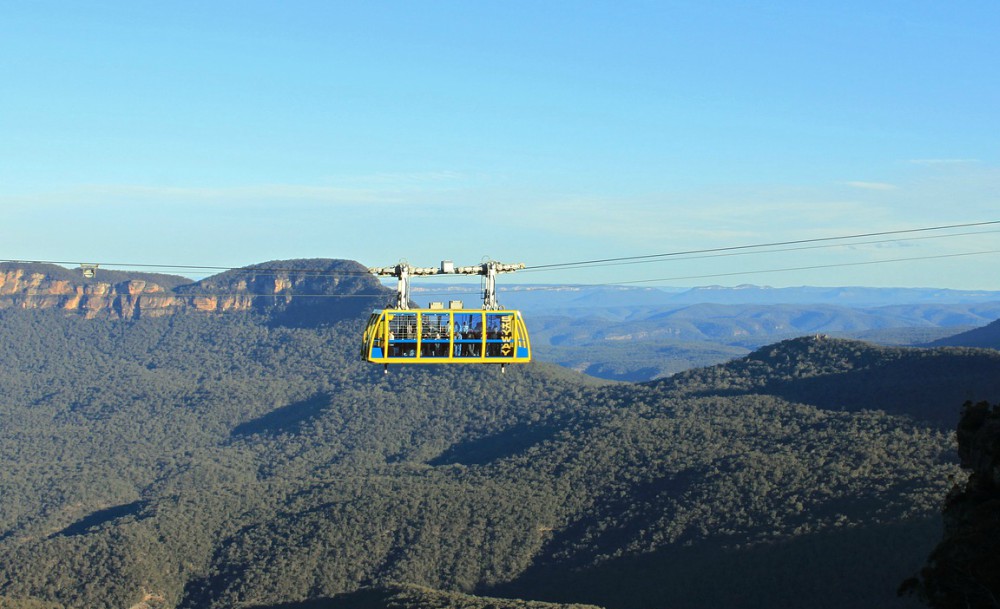
When is the best time to visit the Blue Mountains?
A visit to the Blue Mountains is a great choice year-round. From autumn to spring, the crisp mountain air is perfect for hiking and in summer, the temperatures on the valley floor provide respite.
Winter sees several festivals, including the popular Yuletide (Christmas in July) events. This is the perfect time to rug up and take in the crisp mountain air. In summer, the cooler mountain temperatures can provide a respite from the high temperatures in Sydney.
Weekends in spring and autumn get quite busy as Sydneysiders head up to enjoy the changing colours and stunning floral displays, so book early if you plan to stay overnight.
Got a question? Head over to our Australia Travel Tips Facebook Group and ask a local.

